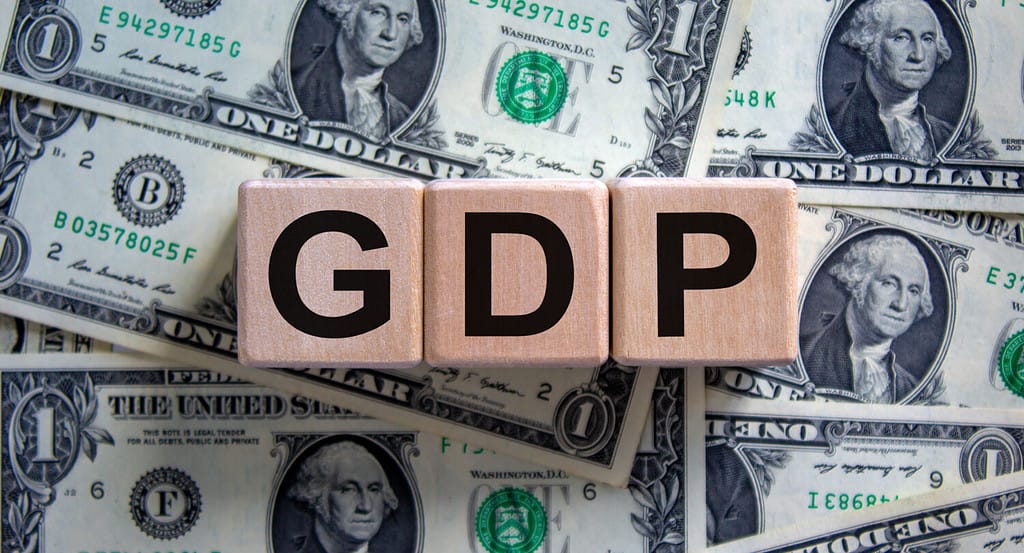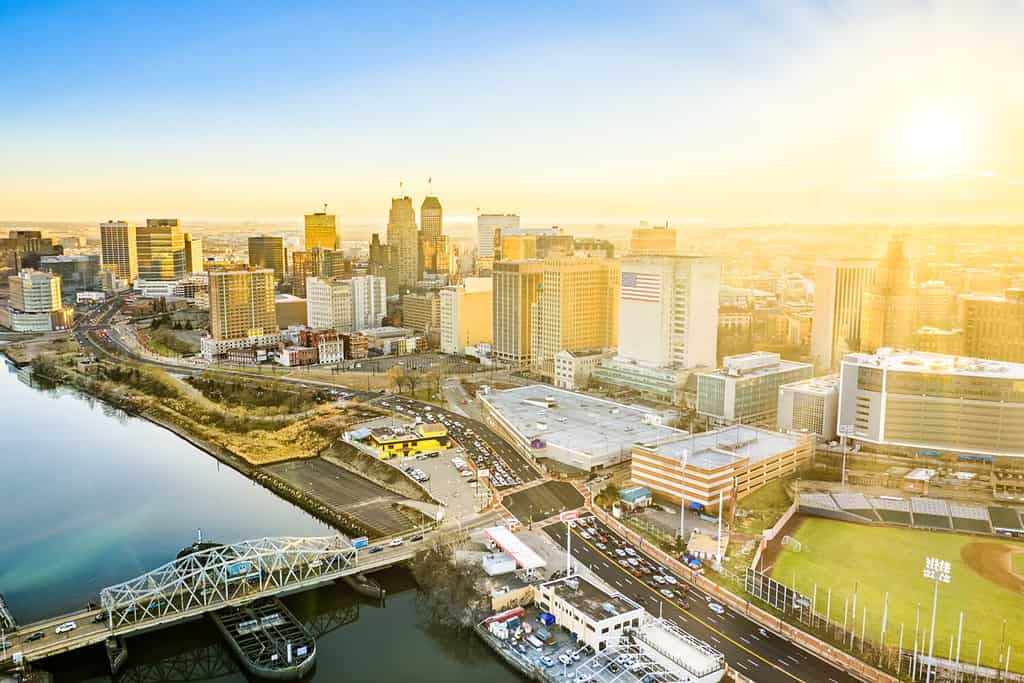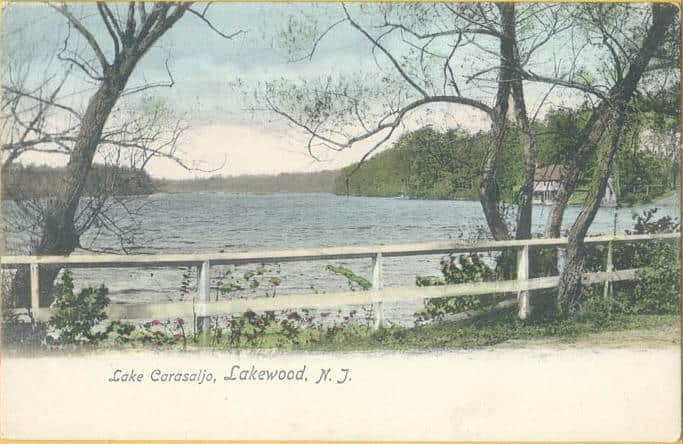What impact do large cities have on the states they’re in? As it turns out, large cities have a significant influence on education, industry, and the economic status of residents not just in the state, but the nation. In this article, we analyze the impact of the five largest cities in New Jersey. With over nine million residents and a total Gross Domestic Product (GDP) of $569.5 billion dollars in 2022, New Jersey is one of the top ten producing states in the United States. Typically, larger cities within the states produce this wealth.
What Is Gross Domestic Product, and Why Does It Matter?
GDP is a measure of value added through production. New Jersey contributes approximately $140.2 billion annually in Federal Tax revenue. New Jersey has the unique combination of being the recipient of few tax-based benefits from the government due to a large population of high-wage earners. As a result, New Jersey contributes more to the Federal Reserve each year than it receives from the government in the form of tax benefit programs. In comparison, only five states in the nation can claim this: Florida, New Jersey, Minnesota, Delaware, and Illinois. That’s not too bad for the fourth-smallest state in the nation.

GDP is a term to track the financial contribution of metropolitan areas. The U.S. Government tracks the amount of money each state and county contributes to taxes each year.
©Dmitry Demidovich/Shutterstock.com
First, let’s look at the total population of the five largest cities in New Jersey.
| Newark | Population: 305,344 |
| Jersey City | Population: 286,670 |
| Paterson | Population: 156,661 |
| Lakewood | Population 139,506 |
| Elizabeth | Population: 134,283 |
Next, we’ll rank these cities by land mass, from largest to smallest.
| Lakewood | Land Mass: 25.08 Square Miles |
| Newark | Land Mass: 24.14 Square Miles |
| Jersey City | Land Mass: 21.03 Square Miles |
| Elizabeth | Land Mass: 13.64 |
| Paterson | Land Mass: 8.07 Square Miles |
Lastly, we’ll review the economic output of each of these cities, from highest to lowest.
| Newark, NJ (Essex County) | 48,672,183 |
| Jersey City (Hudson County) | 41,723,500 |
| Elizabeth, NJ (Union County) | 34,370,946 |
| Lakewood, NJ (Ocean County) | 20,496,861 |
| Paterson, NJ (Passaic County) | 20,046,491 |
Demographics of New Jersey’s Largest Cities
As shown in the charts, the economic output of each city is related to its population. Still, a larger population doesn’t always result in a higher economic output. Paterson, NJ, has far less landmass and a higher population than Lakewood, NJ, yet the city generates significantly less GDP. The answer to this lies in the demographics of the city. Which industry thrives in the city, the age of the residents, and the education level of the residents all contribute to the wealth of any given region. Children, for example, will make less economic contributions as they do not work. Moreover, areas with heavy reliance on agriculture may also generate less wealth than areas focused on industrial, medical, or technology.
Finally, let’s explore the demographics of each of these cities, from top GDP to lowest.
1. Newark, NJ — The City with the Largest GDP and Population

Newark has grown into a heavily populated city, rich in culture, entertainment, and industry.
©Mihai_Andritoiu/Shutterstock.com
Newark, NJ, developed as a major shipping and transportation port along the East Coast due to the Hudson River. This industry allowed Newark to grow in population and services. Today, Newark has become a busy and diverse city. Newark has cultivated a downtown area that’s culturally rich, containing museums, entertainment venues, and dining options. The climate is typical of the Northeast, with cold winters ranging from twenty-six degrees in the winter to the mid-eighties in the summer.
Data provided by the U.S. Census shows that in Newark, twenty-three percent of the population owns their own home, seventy-seven percent graduated high school, and sixteen percent achieved a bachelor’s degree or higher. Nearly twenty-four percent of the population were under the age of eighteen in 2021, while ten percent were over the age of sixty-five. Over sixty percent of the remaining population was active in the civilian workforce.
The majority of the industry in Newark is in transportation and warehousing, generating $7,938,564. The second-highest revenue is through retail sales, generating an additional $3,104,307. From these demographics, we can see that Newark is primarily a city of working families in various service and product manufacturing fields.
2. Jersey City — The Second Largest City in GDP and Population

Jersey City has historical significance as a gateway to the United States for many immigrants. Early immigrants arrived by train or boat, then processed through Ellis Island.
©Sergii Figurnyi/Shutterstock.com
Jersey City’s location may make this the most recognizable city in New Jersey. Situated on the shores of the Hudson River, where it meets Upper New York Bay, the city has views of the New York Skyline, Ellis Island, and the Statue of Liberty. Ferry service allows residents of Jersey City easy access to Manhattan, and tourists come from all over the world to visit Ellis Island. Like Newark, Jersey City has a lively city area that includes multicultural celebrations, art museums, music, and entertainment, as well as suburban areas.
Twenty-nine percent of the population of Jersey City own their own homes, while twenty-seven percent are under the age of eighteen, and eleven percent are over the age of sixty-five. Eighty-nine percent of adults hold a bachelor’s degree, while sixty-nine percent are employed. Retail sales generated $3,302,147, while healthcare and social services aid revenue reached $1,306,925 in 2021.
3. Elizabeth, NJ

The American Revolution impacted many cities across the Eastern Coast.
©Classix/iStock via Getty Images
Elizabeth City, founded in 1664 and originally named Elizabethtown in honor of Sir George Carteret’s wife, has a rich history. Carteret was one of Elizabeth’s first inhabitants. The name changed to Elizabeth in 1740. Elizabeth was a focal point of conflict in the American Revolution, sustaining considerable damage. The arrival of the railroad and the development of the Staten Island Port after the war assisted the city in recovery and establishment. Today, Elizabeth is a large city that remains close to its roots.
Thirty-three percent of Elizabeth’s population is under the age of eighteen, with ten percent registered as over the age of sixty-five. Twenty-five percent of the residents own their own homes. Sixty-seven percent of working-age individuals are employed, sixteen percent own their homes, and seventy-five percent graduated high school.
The highest revenue in the city is produced by transportation and warehouse at $2,111,908, then retail at $1,694,650.
4. Lakewood, NJ

Lake Carasaljo was created by the damming of the Metedenconk River in the late 1700s. By the late 1800s, the lake became an attraction.
©Lake Carasaljo. (2021, July 23). In Wikipedia. https://en.wikipedia.org/wiki/Lake_Carasaljo / Public Domain – Original / License
Lakewood was initially populated in 1814 by primarily English and Dutch settlers. However, in the late 1800s, the town became a desirable area for wealthy New York residents, who began building homes around Lake Carasaljo. Despite growing into a large city, Lakewood has remained a scenic area containing health retreats, spas, and resort facilities.
Forty-nine percent of the population is under the age of eighteen, while nine percent is over the age of sixty-five. Of the working population, fifty percent own their own homes, eighty-nine percent graduated high school, and thirty percent graduated college. The top industry was retail sales at $2,193,222, followed by health care with $896,781.
5. Paterson, NJ

Lambert Castle, the original home to Catholina Lambert, Paterson silk magnate, operates as a museum documenting the history of the city.
Founded after the American Revolution, Paterson has the distinction of being one of the first planned industrial cities in America. Reportedly, Alexander Hamilton considered the waterfall in the area an ideal location to establish a manufacturing town. The town found financial success selling waterpower and cotton mills. Great Falls, the waterfall that attracted settlers to the area, is listed as a historic site.
Today, twenty-seven percent of residents are under the age of eighteen, while eleven percent are over the age of sixty-five. Twenty-six percent of the population own their homes, while seventy-seven percent graduated high school. Twelve percent obtained a bachelor’s degree or higher. Sixty-two percent of the adults in the city are employed. Retail generated $1,061,794 in revenue and healthcare revenue reaching $1,049,304.
In summary, it’s clear there are similarities in the cities that contribute to their economic success. Adults of working age tend to have higher education and rates of employment. Three of the five cities have continued to expand on the founding economics through shipping and transportation. One has focused on its historic vacation status. Paterson has diversified from a manufacturing town to supplying multiple economic opportunities for residents.
Final Thoughts
These key points offer valuable insight into how successful cities are established and maintained. Through a focus on education and job growth, other cities can develop plans to improve their own resources and stability. Do you want to know more about New Jersey? Don’t miss our post on the oldest cities in the state!
Thank you for reading! Have some feedback for us? Contact the AZ Animals editorial team.








